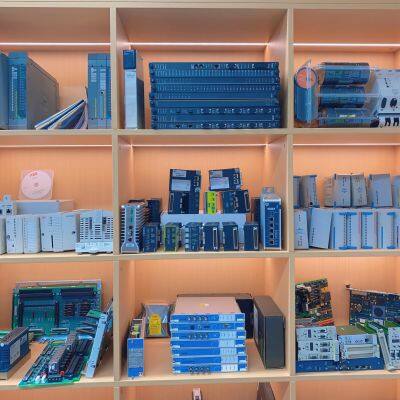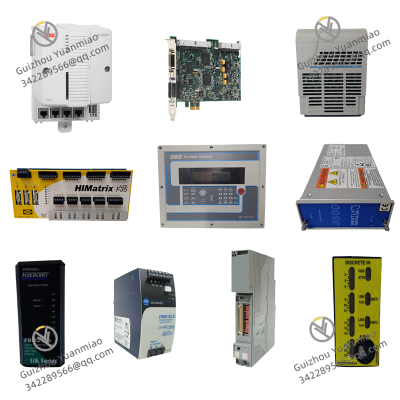Description du produit
I. Aper?u
PROVIBTECH TM201-A02-B00-C00-D00-E00-G00 est un émetteur de vibrations. Sa mission principale est de convertir les vibrations mécaniques de l'équipement en signaux électriques standard pour qu'il puisse être connecté à divers systèmes d'acquisition de données, systèmes de contr?le ou instruments de surveillance. Cet émetteur adopte des concepts de conception et des procédés de fabrication avancés, caractérisé par une grande fiabilité et une grande stabilité, permettant à celui-ci de fonctionner de manière continue et stable dans des environnements industriels complexes et changeants. Sa conception structurelle compacte le rend facile à installer et à intégrer dans divers types d'équipements, et il peut être facilement adapté tant pour l'installation en tant que composant d'un nouvel équipement que pour la mise à niveau et la transformation des systèmes de surveillance d'équipements existants.
II. Caractéristiques clés
A. Capteur haute précision
TM201-A02-B00-C00-D00-E00-G00 est équipé d'un capteur piézoélectrique haute précision. Ce type de capteur peut capturer de manière sensible les changements de vibrations extrêmement subtils, avec une précision de mesure allant jusqu'à ±0,5 % F.S. (plein échelle). Cela signifie que lors de la mesure des vibrations de l'équipement, il peut fournir des données très précises, garantissant aux utilisateurs de prendre des jugements précis sur l'état de fonctionnement de l'équipement. Par exemple, dans la surveillance des vibrations des grands moteurs, cet émetteur peut détecter avec précision les minuscules changements de vibrations du rotor du moteur causés par des facteurs tels que le déséquilibre, fournissant une base pour prendre des mesures de maintenance en temps opportun et évitant les pannes de moteur causées par des problèmes de vibrations qui affectent la continuité de la production.
B. Fonctionnement à faible bruit
Dans les environnements industriels réels, divers signaux de perturbation apparaissent l'un après l'autre. TM201-A02-B00-C00-D00-E00-G00 prend pleinement en compte ce problème dans sa conception et s'engage à réaliser un fonctionnement à faible bruit. Son circuit interne a été soigneusement optimisé, ce qui peut supprimer efficacement les interférences externes et le bruit autogénéré, avec un niveau de bruit aussi bas que<3μg rms. This feature allows the transmitter to still stably output pure vibration signals in complex electromagnetic environments or industrial sites with high background noise, ensuring the accuracy and reliability of monitoring data. For instance, in places with strong electromagnetic interference such as steel plants, it can accurately transmit vibration signals without being affected by the surrounding complex electromagnetic environment.
C. Multi-Axis Measurement Capability
This transmitter has a unique multi-axis measurement function, which can measure vibration in three axes (X, Y, Z) simultaneously. During the actual operation of industrial equipment, the vibration of the equipment is often a complex multi-dimensional movement, and single-axis measurement cannot fully reflect the real vibration state of the equipment. The multi-axis measurement capability of TM201-A02-B00-C00-D00-E00-G00 makes up for this defect. Through the comprehensive analysis of vibration data from the three axes, users can understand the operating status of the equipment more comprehensively and accurately, and judge whether there are potential fault risks in the equipment. Taking wind turbines as an example, their blades generate vibration in multiple directions during rotation. The multi-axis measurement function of this transmitter can fully capture this vibration information, providing detailed data for the health monitoring of wind turbines.
D. Wide Range Adaptability
To meet the diverse needs of different industrial application scenarios for vibration measurement ranges, TM201-A02-B00-C00-D00-E00-G00 provides an extremely wide measurement range, from 0.05g to 50g. It can perform accurate measurements with ease, whether for precision equipment with small vibration amplitudes or heavy mechanical equipment with large vibrations. For example, in semiconductor manufacturing equipment, tiny vibrations may have a significant impact on product quality. At this time, the transmitter can accurately measure vibrations within a low range; while in large machinery such as mining equipment, large vibrations require a larger range for monitoring, and it is also competent, ensuring reliable data for vibration monitoring of different types of equipment.
E. High Output and Multiple Output Options
High Output Signal
This transmitter provides a high output signal of 4-20mA. This standard current output signal has strong anti-interference ability and can maintain the stability and accuracy of the signal during long-distance transmission. The 4-20mA output signal is convenient for seamless connection with various data acquisition systems, controllers, and other industrial automation equipment. Users can easily realize the acquisition and processing of vibration data without complex signal conversion and conditioning circuits. For example, in a large industrial automated production line, the vibration data of each equipment is output as a 4-20mA signal through the TM201-A02-B00-C00-D00-E00-G00 transmitter, which can be directly connected to the central control system to achieve centralized monitoring and management of the vibration status of the entire production line equipment.
Multiple Output Options
In addition to the 4-20mA current output, TM201-A02-B00-C00-D00-E00-G00 also provides multiple options such as 0-10V voltage output and RS232 digital interface output. The 0-10V voltage output is suitable for application scenarios that are more sensitive to voltage signals or require simple analog control; the RS232 digital interface facilitates data communication with computers, data recorders, and other equipment, enabling more advanced data processing and analysis functions. For example, in a laboratory environment, researchers may need to transmit vibration data directly to a computer through the RS232 interface and use professional software for in-depth data analysis and model establishment; in some simple control systems, the 0-10V voltage output can be directly used to control the operating status of related equipment and make real-time adjustments according to vibration conditions.
F. High Protection Level
Dust and Water Resistance
TM201-A02-B00-C00-D00-E00-G00 has an IP67 protection level. This means it has reached the highest level in terms of dust resistance, which can completely prevent dust from entering the interior of the equipment, avoiding damage to electronic components caused by dust accumulation and affecting the normal operation of the equipment. In terms of water resistance, it can be immersed in water 1 meter deep for 30 minutes without being affected. Even in humid and water-rich industrial environments, such as open-air installation areas of chemical enterprises and sewage treatment plants, it can work reliably, ensuring the continuity and stability of vibration monitoring work.
Explosion-Proof Feature
This transmitter also has an Exia IIC T4 explosion-proof level, which allows it to be safely used in hazardous areas where flammable and explosive gases, vapors, or dust exist. In industries such as petrochemical and coal mining, there are many potential explosion risks in the equipment operating environment. The explosion-proof design of TM201-A02-B00-C00-D00-E00-G00 can effectively avoid explosion accidents caused by electric sparks or high temperatures generated by the equipment itself, providing a reliable solution for equipment vibration monitoring in these hazardous areas and ensuring the safety of personnel and equipment.

III. Technical Parameters
A. Optical Characteristics (There may be an error here; vibration transmitters generally do not have optical characteristics. It is assumed to be other characteristics, and the following is supplemented according to the characteristics of conventional vibration transmitters)
Measurement Accuracy: ±0.5% F.S., ensuring accurate measurement of equipment vibration and providing a reliable basis for equipment status evaluation.
Noise Level:<3μg rms, ensuring the purity of the signal in complex environments and reducing the impact of interference on measurement results.
Number of Measurement Axes: 3 axes (X, Y, Z), fully capturing multi-dimensional vibration information of the equipment and reflecting the operating status of the equipment more accurately.
Measurement Range: 0.05g - 50g, adapting to the measurement needs of different types of equipment and different vibration amplitudes.
B. Electrical Characteristics
Output Signal: 4-20mA, 0-10V, RS232. Multiple output forms meet the access requirements of different equipment and systems.
Power Supply Voltage: Usually DC24V (specifically, it may vary according to the actual model and application scenario). It is a standard industrial power supply voltage, which is easy to obtain and adapt.
Signal Transmission Distance: When using 4-20mA output signal, reliable long-distance transmission can be achieved, generally up to several hundred meters, reducing data inaccuracies caused by signal attenuation.
C. Mechanical and Environmental Characteristics
Operating Temperature Range: -40℃ to +85℃, capable of adapting to harsh environments such as extreme cold and high temperature, and can work normally in vibration monitoring of equipment around cold storage and high-temperature furnaces.
Vibration Resistance: It has good vibration resistance itself and can withstand a certain intensity of external vibration without affecting its measurement accuracy, ensuring stable operation in industrial sites with complex vibration environments.
Protection Level: IP67 for dust and water resistance, and Exia IIC T4 for explosion protection, providing reliable protection for use in harsh and hazardous environments.
IV. Functions and Working Principles
A. Vibration Signal Acquisition and Conversion
The operation of TM201-A02-B00-C00-D00-E00-G00 starts with the acquisition of equipment vibration signals. Its internal piezoelectric sensor serves as the core component. When the equipment generates vibration, the piezoelectric sensor is subjected to mechanical stress. According to the piezoelectric effect, piezoelectric materials generate charges on their surfaces when subjected to external forces, and the amount of charge is proportional to the applied external force. Therefore, changes in the vibration amplitude and frequency of the equipment will be converted into corresponding changes in electrical signals through the piezoelectric sensor. These original electrical signals are relatively weak and mixed with various noises, and then enter the signal conditioning circuit of the transmitter. In the signal conditioning circuit, through a series of processing processes such as amplification and filtering, the original electrical signals are converted into stable and standard output signals, such as 4-20mA current signals, 0-10V voltage signals, or digital signals output through the RS232 interface, for subsequent equipment to perform data acquisition and analysis.
B. Data Transmission and Application
The signals after conversion and conditioning can be transmitted to external equipment in multiple ways. When using 4-20mA or 0-10V analog signal output, it can be directly connected to various data acquisition modules, PLC (Programmable Logic Controller) analog input modules, and other equipment. After receiving the signals, these equipment can analyze and process the vibration data according to preset algorithms and thresholds, such as judging whether the equipment is in normal operating status and sending alarm signals in a timely manner when the vibration value exceeds the normal range. If output through the RS232 digital interface, it can be connected to computers, data recorders, and other equipment. On the computer side, users can use professional monitoring software to conduct real-time monitoring, storage, and analysis of vibration data, as well as generate various reports and charts, providing detailed data support for the long-term maintenance and management of equipment. For example, through trend analysis of vibration data over a period of time, the time point when the equipment may fail is predicted, maintenance plans are arranged in advance, and the risk of sudden equipment failures is reduced.
V. Application Scenarios
A. Industrial Equipment Monitoring
Motors and Pumps
In various industrial productions, motors and pumps are widely used equipment. The normal operation of motors is crucial to the stability of the entire production process, while pumps are responsible for transporting various liquid media. TM201-A02-B00-C00-D00-E00-G00 can be used to monitor the bearing vibration of motors, rotor unbalance vibration, and the vibration of pump bodies. Through real-time monitoring of the vibration of these equipment, potential problems such as bearing wear, rotor faults, and pump body cavitation can be found in a timely manner, maintenance plans can be arranged in advance, production interruptions caused by sudden equipment failures can be avoided, production efficiency can be improved, and maintenance costs can be reduced.
Compressors and Fans
Compressors and fans are used in the industrial field to compress gases and transport air or other gas media. During their operation, they are prone to vibration due to wear of mechanical parts, fluctuations in gas pressure, and other reasons. Using TM201-A02-B00-C00-D00-E00-G00 to monitor the vibration of compressors and fans can effectively detect problems such as impeller unbalance, bearing faults, and seal leakage. For example, in chemical enterprises, the stable operation of compressors is directly related to the supply of gases in the production process. Through vibration monitoring of compressors, potential faults can be found and resolved in a timely manner, ensuring the safety and stability of chemical production.
B. Applications in the Energy Industry
Power Plant Equipment
In power plants, whether it is steam turbines and generators for thermal power generation or water turbines for hydropower generation, all operate at high speeds and under high loads. The vibration status of the equipment directly affects the stability and safety of power generation. TM201-A02-B00-C00-D00-E00-G00 can conduct real-time vibration monitoring on these key equipment. Through the analysis of vibration data, problems such as fatigue and looseness of equipment components can be found in a timely manner, providing a basis for preventive maintenance of the equipment, ensuring the reliable operation of the power plant, and reducing power outages caused by equipment failures.
Oil and Gas Extraction Equipment
During the oil and gas extraction process, equipment such as drilling equipment, pumping units, and gas pipeline compressors work in harsh environments, and vibration problems are relatively prominent. Relying on its high protection level and reliable measurement performance, TM201-A02-B00-C00-D00-E00-G00 can be used for vibration monitoring of these equipment. For exaPar exemple, sur les plates-formes de forage pétrolier offshore, la surveillance des vibrations des équipements est cruciale pour garantir le fonctionnement s?r de la plate-forme et le bon déroulement des opérations de production. Cet émetteur peut surveiller avec précision les vibrations des équipements, détecter en temps opportun les risques de défaillance potentiels et garantir le déroulement s?r et efficace des travaux d'extraction pétrolière offshore.
PROVIBTECH TM201-A00-B00-C00-D00-E00-G00 Protection antivibratoire
PROVIBTECH TM202-A00-B00-C00-D00-E00-G00 Transmission de vibration
PROVIBTECH TM521-A02-B00-C02-D00-E01-G00-10-M1 Module de surveillance de vibration
PROVIBTECH TM501-A03-B00-C00-D00-F00-G00 Module de surveillance de vibration
ABB LD 810HSE EX Dispositif de liaison de bus de terrain
Système de surveillance de vibrations Vibro-Meter VMF-RLC16-V111200-570-101-015


Vibro-Meter VMF-IOC4T 200560-101-017 Système de surveillance de vibration
TRICONEX D28799-005 Module d'alimentation électrique
TRICONEX 7400213-100 Unité d'exécution matérielle de signal numérique
Module de sécurité d'entrée numérique de densité TRICONEX DI3361
Module de sortie TRICONEX DO3401
Module de sortie analogique TRICONEX AO3482
ABB GRID BREAKER UNIT GBU72 3BHB030310R0001
TRICONEX CM2201 7400206-100 Module de communication - Plaque de base
TRICONEX DI2301 7400208-020 Carte mère d'entrée numérique
TRICONEX AI2351 7400210-100 Carte de base d'entrée analogique
TRICONEX AI2361 7400210-020 Module de sécurité d'entrée analogique
TRICONEX AT-2701FX 843-000844-00 REVD Carte de module d'entrée/sortie
BENTLY NEVADA 330901-05-32-05-02-00 Module de surveillance de vibration
BENTLY 330103-00-03-10-02-05 Sonde de proximité
BENTLY 330704-000-050-10-02-05 Sonde de proximité
BENTLY NEVADA 330104-00-05-10-02-CN Sonde de proximité
BENTLY NEVADA 330780-90-05 Sonde de proximité
BENTLY 330180-X1-CN Sonde de proximité
 yezi
Bonjour ! Bienvenue dans ma boutique. N'hésitez pas à me poser vos questions.
yezi
Bonjour ! Bienvenue dans ma boutique. N'hésitez pas à me poser vos questions.


